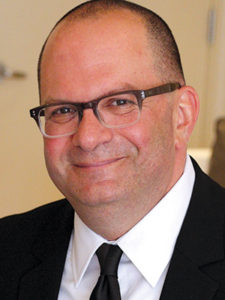
When it comes to effectively treating patients with arthritis, rheumatologist and sports medicine specialist Andrew Concoff, MD, says exercise is the key.
During the ACR/ARHP combined practice session Sports Medicine for the Weekend Warrior: Lower Extremity Injury, Dr. Concoff will outline the importance of exercise as part of arthritis treatment. The session, which takes place from 2:30 – 4:00 pm Tuesday in Room W183a, also will discuss how to treat the injuries that may occur as a result.
Dr. Concoff, who practices at St. Joseph Health in Fullerton, CA, says exercise is beneficial for patients with almost every known form of arthritis.
“With regular exercise, you can get improvement in control of disease activity,” he said. “You can get improvement in strength and physical function through exercise, which is complementary to the medicines we use to treat systemic autoimmune disorders such as lupus or rheumatoid arthritis. It’s the centerpiece of treatment for osteoarthritis.”
Yet in the course of exercising, patients often develop overuse injuries — or what Dr. Concoff says is most likely misuse injuries — from excessive stress and strain on localized areas of the body.
For Dr. Concoff, learning the sports medicine piece of treatment was as important as learning the rheumatology piece.
“If I was really going to be able to systematically understand the best application of exercise for osteoarthritis, I decided I had to be able to apply exercise as a treatment — like a medication, if you will — but also be able to assess injuries that might develop if I’m having patients with osteoarthritis exercise. For me, it’s a matter of being able to optimally apply exercise to the betterment of those with arthritis.”
Dr. Concoff will deliver two lectures at the session, beginning with “Common Sports Injuries in the Lower Extremity in the Weekend Warrior,” which will examine injuries to the hip, knee, and ankle. He will pay particular attention to pain in the lateral aspect of the hip or trochanteric pain.
“Traditionally, rheumatologists have viewed trochanteric pain as a sign of bursitis or inflammation of a bursa in the area and have often used steroid injections in the area,” Dr. Concoff said. “In my clinic, about nine out of 10 of these cases we see turn out to be a tendon problem such as gluteal tendinopathy. The muscles from the gluteal area come over and assert on that area to turn the hip out to the side. The problem is, if we’re thinking it’s bursitis and injecting steroids when it’s really a tendon problem, we can do damage to the tendon. Steroid injections tend to make a tendon problem worse in the long run.”
That’s why he thinks it’s crucial for rheumatologists to be able to differentiate gluteal tendinopathy from trochanteric bursitis.
“Physical therapy is the way to address tendon disorders associated with that area,” Dr. Concoff said. “If we let our butt muscles get weak enough, you can get this trochanteric pain. But you can also get low back pain, knee pain, etc. It’s critically important to keep muscle strength through the buttocks, which should be the largest muscle in the body. And yet, we tend to lose our buttocks with aging. If we don’t maintain adequate buttock strength, we tend to use different muscle activation patterns, which can cause overwork of certain parts of the body and cause pain.”
In his second talk, “Battling Chronic Tendinosis,” Dr. Concoff will describe the pathophysiological findings in chronic tendinosis and review the evidence for current approaches to treating tendinosis.
“Chronic tendinosis is a real problem, because like osteoarthritis, it’s one of the conditions for which we don’t have clarity for optimal treatment,” he said. “There’s a lot of controversy surrounding the treatment of chronic tendinosis right now.”
Physical therapy remains the mainstay of treatment, and Dr. Concoff will share specific rehab protocols to treat chronic tendon problems.
“Beyond physical therapy, when people fail the optimal physical therapy protocol, there are other things that have been advocated,” he said. “Platelet-rich plasma (PRP) injections have been advocated. There are stem cell treatments that have been advocated. Both have shown promise in small studies, but they were poorly controlled, biased studies, so they’re incredibly controversial. Some people see these ’orthobiologic‘ injection options as the holy grail of treatment for musculoskeletal disorders. and some believe they are a complete sham or scam.”
Dr. Concoff will review the evidence for PRP and stem cell treatments, but he said the profession still needs well-designed, multi-centered clinical trials to resolve whether these treatments work at all, and if so, what is the best protocol for preparing and delivering these medications.
And while he will also review other available treatments, including percutaneous ultrasound-guided needle tenotomy, the real key to chronic tendinopathy, he said, is finding the underlying cause.
“For example, with the patellar tendon at the knee, maybe the foot alignment is out of position and that’s causing a torque or a twisting action on the tendon, which is poorly tolerated,” Dr. Concoff said. “Tendons can be irritated by forces from above or below. Patients walk into an exam room complaining of knee pain, but the problem may be coming from their foot or their hip. If you just focus on the knee with localized procedures, it might provide short-term benefit, but you won’t solve the problem if you don’t identify the underlying biomechanical factors that are putting stress on that tendon. We really need to do comprehensive biomechanical assessments to look at what’s it’s happening.”
The session will also include a talk by Karin Silbernagel, PT, ATC, PhD, Assistant Professor in the College of Health Sciences at the University of Delaware, Newark, DE, who will present “Prevention of Overuse Injuries in the Lower Extremity.” Dr. Silbernagel will review the principles of graduated conditioning and discuss strength, endurance, and flexibility training, especially for older patients.


